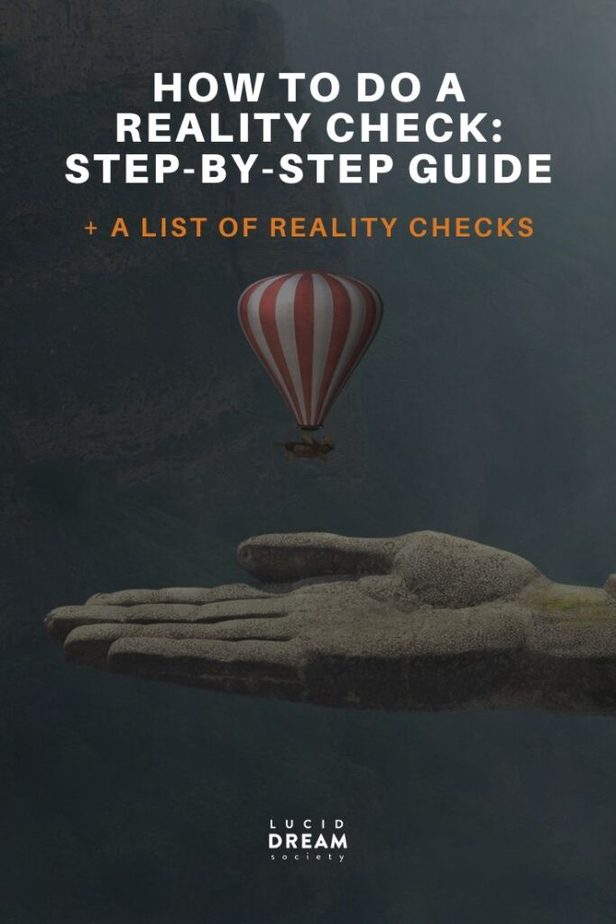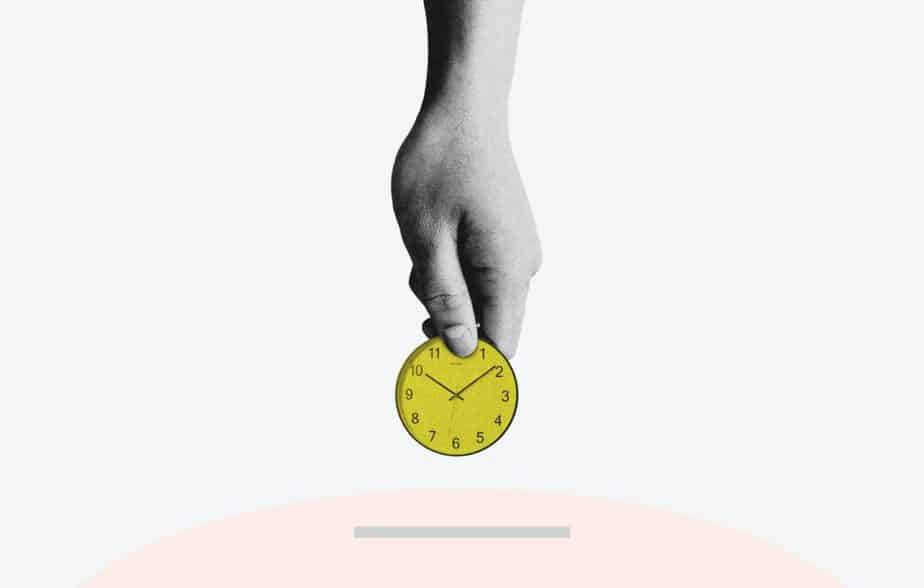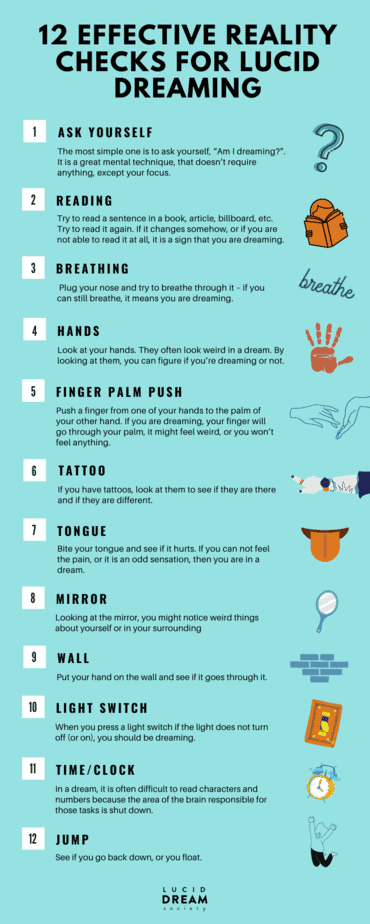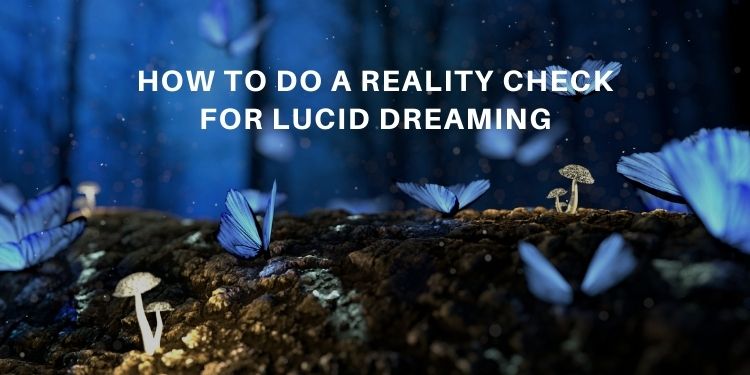This post and the photos within it may contain affiliate links. If you purchase something through the link, I may receive a commission at no extra charge to you.
What is a reality check, how can you do it, and why is it essential for lucid dreaming?
Reality checks are vital when differentiating a dream from the conscious reality. They will help you to gain awareness within the dream state.
There are various essential aspects when it comes to reality checks. In this article, you will learn everything you need to know about it, including:
1. What is a reality check?
2. A list of reality checks
3. How to do a reality check: Step-by-step guide
4. FAQ:
- Why is it essential to do reality checks?
- How many reality checks should I perform?
- When is the best time to perform reality checks?
- How do you remember to do reality checks?
- How can you do reality checks in dreams?
- Do reality checks always work?
- What if reality checks are not working at all?
5. Summary & Infographic

What is a reality check?
A reality check (reality testing) is a simple action that will help you differentiate whether you are in the real world or the dream world.
It can be a psychical or mental action, and to be successful, you need to perform it multiple times a day.
A reality check demands you to observe your environment, and it requires your full attention.
If you are awake, your surrounding, your abilities, and yourself are going to be normal. However, in a dream, things are a bit different.
You may suddenly witness something very odd; you may be able to push a finger through your finger palm, it could be impossible to tell the time/or to read something, etc.
Any sort of strange and odd visuals may symbolize that you are dreaming, which automatically will make you lucid.
Interestingly, according to a study, your awareness level is similar in your waking and dreaming states. Higher awareness in the awake state could lead to enhanced awareness when you’re dreaming.

Furthermore, results from another study concluded that reality checks (combined with two other techniques) were an effective way of inducing lucid dreams.
A list of 12 effective reality checks
The following reality checks are practical and easy and will help you to test your reality with a physical or mental action:
- Ask yourself – the most simple one is to ask yourself, “Am I dreaming?” It is a great mental technique that doesn’t require anything except your focus.
- Reading – try to read a sentence in a book, article, paper, notebook, billboard, etc. Try to read it a second time. If it changes somehow, or if you cannot read it at all, it is a sign that you are dreaming.
- Breathing – Plug your nose and try to breathe through it – if you can still breathe, it means you are dreaming.
- Hands – Look at your hands – usually, they look distorted in a dream, so by looking at your hands, you can figure out if you’re dreaming or not.
- Finger palm push – Push a finger from one of your hands to the palm of your other hand. If you are dreaming, your finger will go through your palm, it might feel weird, or you won’t feel anything.
- Tattoo – If you have tattoos, look at them to see if they are there and if they are different.
- Tongue – Bite your tongue and see if it hurts. If you can not feel the pain or an odd sensation, you are in a dream.
- Mirror – Looking at the mirror, you might notice weird things about yourself or in your surroundings.
- Wall – Put your hand on the wall and see if it goes through it.
- Light switch – When you press a light button, you should be dreaming if the light does not turn off (or on).
- Time/clock – In a dream, it is often difficult to read characters and numbers because the brain’s area responsible for those tasks is shut down.
- Jump – See if you go back down or you float.

How to do a reality check: Step-by-step guide
A reality check requires a few essential elements to be successful:
Step 1: Choose a reality check
Pick one and stick with it for at least a week.
Step 2: Build a habit
It is best to practice reality checking many times throughout the day – preferably every 1-2 hours, at least in the beginning. If you tend to forget, put an alarm on your phone, which will remind you to do a reality check.
Step 3: Full awareness
When you perform your reality checks, you must shift your attention entirely and only on them. For a few seconds, do not think about anything and focus your awareness solely on your surroundings.
Step 4: A state of doubt
Always have a state of doubt. We perceive reality and our daily life as something that we are in control of and recognize. But this is exactly what we do while we are in a dream. By doubting your reality daily, you will increase your awareness both in the waking and the dream world.
How to do a reality check: FAQ
Usually, we don’t realize that we dream until we wake up. By implementing reality checks in your waking life, you will start doing them in your dreams sooner or later. Persistent daily performance of reality checks will expectedly lead to practice them in dreams too.
Additionally, we are not aware that we are dreaming because we think that we are awake. By deciding to doubt your reality daily, you increase your self-awareness in the real world and dream world.
Perform between 8 – 15 reality checks a day.
At the beginning of your lucid dream journey, it’s best to do them every 1-2 hours.
Time isn’t as important as perseverance. Choose a convenient time when you want to do a reality check.
For example, you can do it after regular everyday activities, as a reminder, such as drinking a glass of water. Find more ideas below.
You can choose something to be your reminder for doing reality checks. It can be anything that you do several times per day. For example, make yourself do reality checks every time you look at:
- Totem – or other possession you have, such as a bracelet, a ring, etc.
- Alarm – simply put an alarm to remind you
- Phone – after you check your phone
- Mirror – after you look at a mirror
- The time/clock – after you check the time
- Weird situation – when something odd or unusual happens
An interesting theory called the “continuity hypothesis” suggests that most dreams are a continuation of what happens in everyday life.
Furthermore, several studies examined the ‘dream-lag effect,’ which is how long it takes for a waking life event to show up in someone’s dream.
The tests found that people were expected to dream about an event the night after it happened.
After 5-7 days, the likelihood of incorporating the event into the dream increased.
If we apply this to reality checks, it means that with persistent daily practicing, you should expect to see reality checks in your dreams the first night or just after 5-7 days.
The truth is that sometimes they don’t work. And It is normal for reality checks to fail from time to time. That doesn’t mean that you are doing something wrong; it is just that sometimes our mind tricks us.
That’s why it’s recommendable to perform a reality check 2 or 3 times, just in case. Sometimes they fail the first time, but the second one, they work. Also, experiment and try different reality checks to find the one it works best for you.
Some reality checks work better than others, so again, try to find the one that works for you.
Another thing might be a poor dream recall. If you struggle to remember your dreams, you should work on improving that.
Otherwise, you will have a tough time doing reality checks in your dreams, as even if you do it, you will not remember. To improve your dream recall, check my guide.
Lastly, be patient. Like any other new habit, you will need some time to get used to it and to see the benefits.

Conclusion
By following the guide and sticking to a chosen reality check, you have the chance to induce a lucid dream in a matter of a few days.
To sum up the key aspects of this article:
- A reality check is a simple action that will help you differentiate whether you are in the real world or the dream world.
- A study proved that reality checks are an effective technique to induce lucid dreams.
- There are many powerful reality checks, including – trying to read, finger palm push, tongue bite, etc.
- To do reality checks correctly, you should follow 4 essential steps – picking a reality check that fits you, building a habit, full awareness, and a state of doubt.
- You should do between 8 – 15 reality checks a day.
- Studies suggest that events from your waking life will most likely show up in your dreams after 5-7 days. If we apply this to reality checks, it means that with persistent daily practicing, you should expect to see reality checks in your dreams within a week.
- Sometimes reality checks don’t work, and if that’s your case, you should find out why.
Let me know in the comments below which reality check you plan to try, or if you tried one already, was it successful?

Kenneth G. Drinkwater (2020). Lucid Dreaming, Nightmares, and Sleep Paralysis: Associations With Reality Testing Deficits and Paranormal Experience/Belief. DOI: https://www.ncbi.nlm.nih.gov/pmc/articles/PMC7093643/
Denholm Aspy (2017). Reality Testing and the Mnemonic Induction of Lucid Dreams: Findings From the National Australian Lucid Dream Induction Study. DOI: https://insights.ovid.com/dreaming/dream/2017/09/000/reality-testing-mnemonic-induction-lucid-dreams/3/00012188
P.R. Corlett (2014). Dreams, reality and memory: confabulations in lucid dreamers implicate reality-monitoring dysfunction in dream consciousness. DOI: https://www.ncbi.nlm.nih.gov/pmc/articles/PMC4160044/
Michael Schredl (2012). Continuity in studying the continuity hypothesis of dreaming is needed. DOI: https://www.researchgate.net/publication/280664515_Continuity_in_studying_the_continuity_hypothesis_of_dreaming_is_needed
van Rijn, E. (2015). The dream-lag effect: Selective processing of personally significant events during Rapid Eye Movement sleep, but not during Slow Wave Sleep. https://psycnet.apa.org/record/2015-43828-003
Jean‐Baptiste Eichenlaub (2018). The nature of delayed dream incorporation (‘dream‐lag effect’): Personally significant events persist, but not major daily activities or concerns. DOI: https://onlinelibrary.wiley.com/doi/full/10.1111/jsr.12697










Best info on this topic I’ve ever read. Thanku for sharing!
Thank you so much!
I’m glad to hear that you enjoyed it!
thank you for these tips!! I did a reality check in my dream tonight and I counted my fingers and somehow had 20 of them, however, I thought that was normal!!! and the friend I was with thought that too!!
Hey Kei!
So, you didn’t become lucid?
Don’t worry, it is an often thing that happens to all of us. Just keep doing the reality check, or experiment with a new one!
Nope, unfortunately, I did not become lucid.
But this was with only one day of constantly doing reality checks, so I’m hoping with some more time I will be able to become lucid!! And I was only doing the one where you look at your hands and count your fingers, but now I’m doing a bunch of different reality checks every time!
I was really disappointed though because even though I looked at my hands and the number of fingers I had was constantly changing, I knew something was off but it just didn’t click that I was dreaming, as the friend I was beside in my dream reassured me that this was normal.
It’s weird how the brain does that!!
Thanks for a great article! I had a similar experience as Kei. I’ve been trying the finger-counting method recently, and while dreaming I found I had a significantly smaller number of fingers. Unfortunately, instead of realizing I was dreaming, my dad (suddenly appearing) told me I had cut them off a few days prior. I had about a five second mourning period before I moved on, resuming the unbothered state I often adopt in dreams. This seems to be a recurring issue for me. I experience scenarios that (upon waking up) make me think: that should have clued me in immediately that I was dreaming! Instead, I come up with some “reasonable” explanation and obliviously continue on. Often I am quite convinced that strange occurrences are “the way they’ve always been.” Even being unable to read is no cause for concern while I’m dreaming. I simply remember I need my prescription updated, or become quite certain that I’ve not been able to read for a few weeks, or possibly that I’ve never been able to read at all! Either way, I’m always very sure there’s no reason for suspicion. Any recommendations? So far my only ideas revolve around being more firm in telling myself during the day (while performing reality checks) that a different number of fingers means dreaming, or emphatically establishing this about whatever reality check I try.
Maybe try using a different method? If that doesn’t work then just keep trying because it will eventually work!
Hi Ren.
Well, it can be tricky! Try experimenting with other techniques or/and reality checks. Be 100% aware and focused on the reality check, when you are doing it throughout the day. Ask yourself, “Am I dreaming?”. Just try to be fully conscious of your surroundings. Another thing that can give you a huge advantage is meditation. 🙂
Hi, I’m actually trapped sometimes and cannot get out of a dream. I know I am dreaming and if it’s nice I try to steer it or just let it sweep me but if it’s a nightmare I really want out. What can I do?
Other times I wake up, I do my morning routine and suddenly I wake up again. I again start my day but then I wake up again. It can cycle 4-5 times ever since I had a head injury a decade ago. I will do the finger touch after the first fake wake-up just to make sure it doesn’t cycle again.
Hey Oana. This sounds like you’ve experienced false awakenings. I have a whole tutorial on the topic, so please, check it out here: http://luciddreamsociety.com/false-awakening/
Multiple times, I am in a dream and think “Hey, I’m dreaming”, but I can’t actually CONTROL the dream…
Controlling the dream requires additional practice! While sometimes, it comes natural to some, others need to do a bit of extra work.
What if I put on an alarm for every time I should do a reality check, if I get used to it then my mind will remember to do a reality check every single time I hear that noise and so if I sleep maybe every time I hear the alarm that’s going off during my sleep I will do a reality check. What do you think…
You should take into consideration that the alarm (during your sleep) might wake you up. But I think you should give it a try and see what happens.
I can usually realise when I dream because I have habit of reality checking.I always keep looking and my palms to see if they’re normal but when I’m dreaming they seem to be either floating on disoriented,but yesterday in my dream my palms looked perfectly normal and I woke up disappointed realising it wasn’t real,but I don’t understand why this reality check which always works for me didn’t work yesterday
Hey, this happens sometimes. Don’t get discouraged 🙂 As written in the article, sometimes reality checks don’t work. And It is normal. Try to experiment with a new reality check or try to increase your awareness in your daily life. :).
hi
I have had few lucid dreams recently but not from actively trying and now I am – in the last one, I began to become aware I was dreaming when I saw my reflection in a mirror and it didn’t look like me. As the dream progressed, I felt more conscious in it and then I suddenly realized I was in a dream and got so excited I woke up 🙁
But thank you for your article it has helped me.
For the past couple nights, ive been abke to remember my dreams pretty well. Is this something that can help me lucid dream?
Yeah, it is great to recall your dreams. You can first start doing reality checks, and then you can experiment with some lucid dream techniques such as WILD/DILD. You can find tutorials on this website – just use the search tool 🙂
Hi, I’ve been trying to lucid dream recently. But, I’ve come across a problem when trying to do so. If I try to focus on the black space behind my eyes when I close them my eyes get really dry and I end up opening them after a couple of minutes, because it holds me from being relaxed. My focus shifts from following the patterns and being relaxed to being somewhat annoyed by the dryness. Do you have any tips for this?
Hey! Thanks for the arcticle! Very succinct and objective.
I’m new to lucid dreams, at least I’m new to give them a try. I had a few in my life, but I lost my consciousness pretty rapidly….
On another occasion I was able to enter the dream state while conscious, not sure if it was an OBE or a WILD, either way, an awesome experience. Soon after I was more aware than I should and the experience ended…
I’m trying to understand why it is so difficult to understand that I’m dreaming… I mean… I fly, I’m able to jump like Hulk, I see otherworldly things, but still, I never ask my self the question “wait a second… am I dreaming?”
Maybe that’s pretty normal from where we come from. I’m trying to create a reality check habit, and at the same time I’m trying to figure out a way to just realize it more easily.
Best wishes!
I’m confused for a lot of things, first when you do reality checks do u open your eyes, or will your dream trick you and make it look like the next day and that you just woke up? And . . . . is it like a normal dream where you know your dreaming or can you choose what you want to dream about?
I’m new to this please respond.
No the checks that you do it’s help you to differentiate dreams on real life
Ex: check your hand and you see ten fingers in real life
and check it your in dream you may see six fingers in one hand , something illogical . why we don’t remember our dreams ? because we think it’s real life, and when we check it’s help us to understand that we dreams
The reality check I’ve used successfully: mentally tracing back my day from waking up to the present moment. If I can recall a reasonable progression from waking up, getting dressed, taking transportation to wherever I am, and so on, I’m awake. But if I can’t remember my morning or how I ended up at this strange auditoreum slash aquarium filled with celebrities and old coworkers, I’m probably dreaming.
Thank you for sharing, this definitely helped!
Awesome! I’m glad to hear that you found the guide helpful 🙂
Hi this is my first time knowing what lucid dreams are, and I guess I just need a little help with the time to do the reality checks because I’ve doing them when I think about reality checks (which is about every 15 minutes.) Is that bad because of how frequent I’m doing them or is it okay?
Hey Devynn.
It really depends, but maybe every 15 minutes is too often. However, if you see positive results, keep doing it!
If you don’t see any change in a few weeks, try to do them every half an hour or even every hour, and see how it goes. Also, after some time, try to incorporate other activities that will help you to experience a lucid dream! That can be anything from meditation, starting a dream journal, trying with other lucid dream techniques (like MILD, DILD, WBTB, WILD), etc. 🙂
i have been doing 3 different reality every 2 hours for 2 weeks and have had none of them show up in dreams